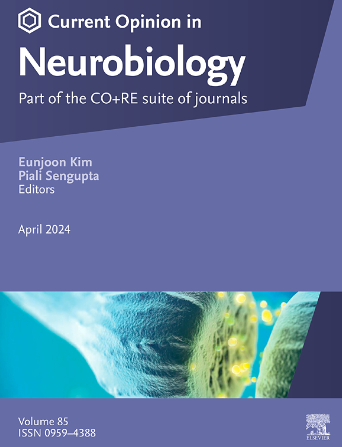Animal models of the human brain: Successes, limitations, and alternatives
IF 4.8
2区 医学
Q1 NEUROSCIENCES
引用次数: 0
Abstract
The last three decades of research in human cognitive neuroscience have given us an initial “parts list” for the human mind in the form of a set of cortical regions with distinct and often very specific functions. But current neuroscientific methods in humans have limited ability to reveal exactly what these regions represent and compute, the causal role of each in behavior, and the interactions among regions that produce real-world cognition. Animal models can help to answer these questions when homologues exist in other species, like the face system in macaques. When homologues do not exist in animals, for example for speech and music perception, and understanding of language or other people's thoughts, intracranial recordings in humans play a central role, along with a new alternative to animal models: artificial neural networks.
人类大脑的动物模型:成功、局限和选择
过去三十年对人类认知神经科学的研究给了我们一份初步的人类思维“部件清单”,它是以一组具有不同且通常非常具体功能的皮质区域的形式出现的。但目前人类的神经科学方法在揭示这些区域究竟代表和计算什么、每个区域在行为中的因果作用以及产生现实世界认知的区域之间的相互作用方面能力有限。当其他物种中存在同源物时,动物模型可以帮助回答这些问题,比如猕猴的面部系统。当动物中不存在同源物时,例如语音和音乐感知,以及对语言或他人思想的理解,人类的颅内记录发挥了核心作用,同时还有一种新的替代动物模型:人工神经网络。
本文章由计算机程序翻译,如有差异,请以英文原文为准。
求助全文
约1分钟内获得全文
求助全文
来源期刊

Current Opinion in Neurobiology
医学-神经科学
CiteScore
11.10
自引率
1.80%
发文量
130
审稿时长
4-8 weeks
期刊介绍:
Current Opinion in Neurobiology publishes short annotated reviews by leading experts on recent developments in the field of neurobiology. These experts write short reviews describing recent discoveries in this field (in the past 2-5 years), as well as highlighting select individual papers of particular significance.
The journal is thus an important resource allowing researchers and educators to quickly gain an overview and rich understanding of complex and current issues in the field of Neurobiology. The journal takes a unique and valuable approach in focusing each special issue around a topic of scientific and/or societal interest, and then bringing together leading international experts studying that topic, embracing diverse methodologies and perspectives.
Journal Content: The journal consists of 6 issues per year, covering 8 recurring topics every other year in the following categories:
-Neurobiology of Disease-
Neurobiology of Behavior-
Cellular Neuroscience-
Systems Neuroscience-
Developmental Neuroscience-
Neurobiology of Learning and Plasticity-
Molecular Neuroscience-
Computational Neuroscience
 求助内容:
求助内容: 应助结果提醒方式:
应助结果提醒方式:


